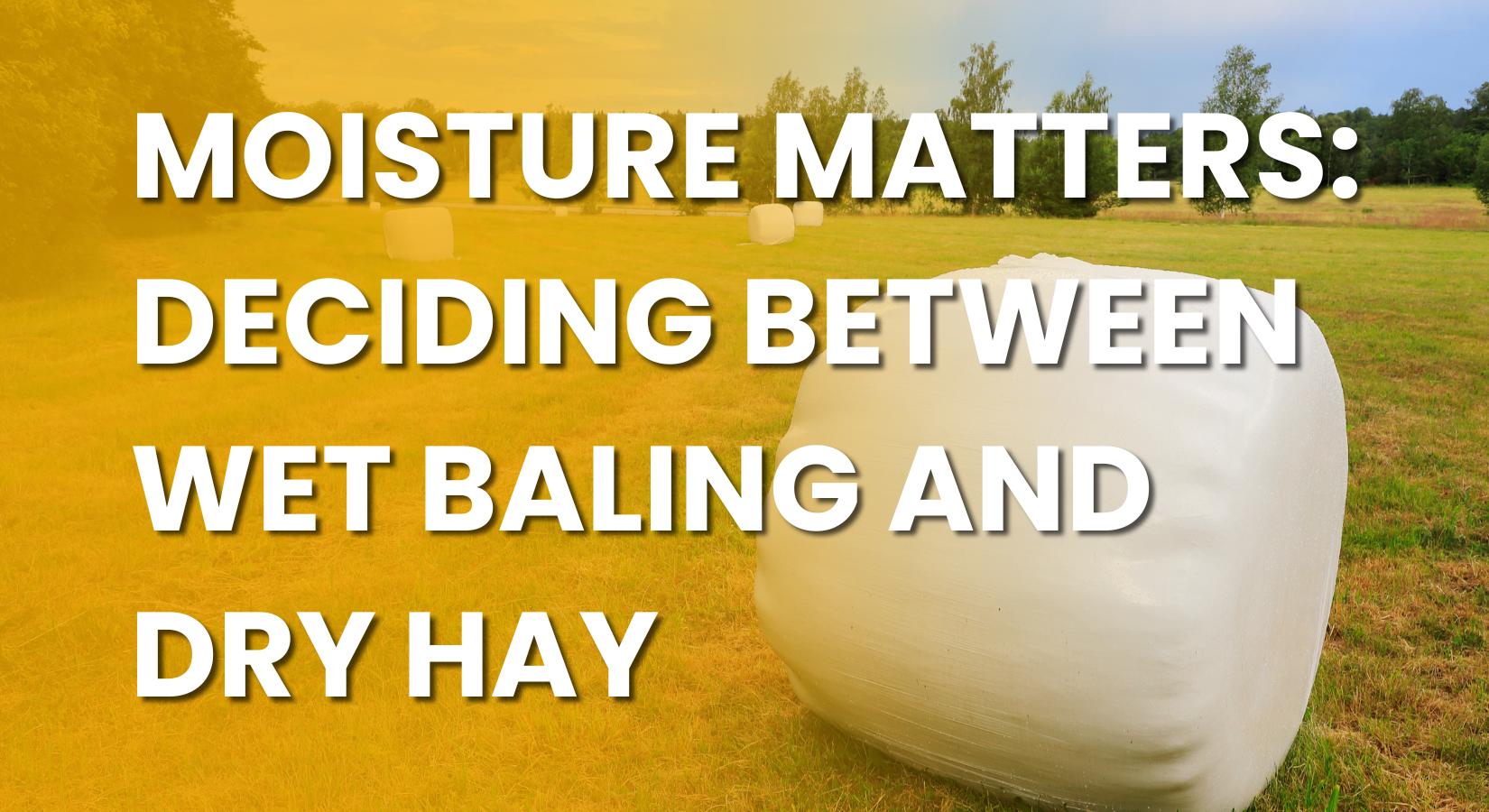When you’re staring down a cloudy sky and watching your crop dry—the decision to wet bale or wait for dry hay becomes a pressing one. The short answer? It depends—mostly on your moisture levels, equipment, and what the weather forecast looks like.
Let’s break down the key considerations for making the right baling decision this season.
Moisture Levels Are Everything
Whether you’re planning to wet bale or aiming for dry hay, moisture content is the critical factor. Ideally, dry hay should be baled at moisture levels below 20%. But when rain is on the horizon or the crop is drying unevenly, waiting can be risky.
That’s where wet baling can offer a smart alternative. In the Forage Guys' experience using inline bale wrappers, you can achieve great results even at higher moisture levels, as long as you’re using the right amount of plastic wrap.
Acceptable Moisture Ranges for Wet Baling:
-
Minimum: ~35% moisture
-
Ideal Range: 45%–50%
-
Maximum Tolerable: Up to 65%, depending on crop condition and wrap quality
With proper forage management and wrapping technique, even a wetter bale can stay in great condition.
Wrapping: More Layers, Better Results
To preserve wet hay properly, six to seven layers of quality silage wrap are recommended—especially in northern latitudes or humid climates. Using a high-quality plastic ensures your forage stays well-sealed and fermenting properly, preventing spoilage and reducing dry matter loss.
Investing in good bale wrap and maintaining tight seals on each bale is crucial. The goal is to exclude oxygen and lock in moisture, allowing natural fermentation to preserve feed value.
Weather Matters
The decision to switch from dry hay to wet baling often comes down to the weather forecast:
-
Clear Skies? Let the crop dry down and go for dry baling.
-
Clouds Rolling In? Don’t risk a ruined harvest—wet bale and wrap it up while you can.
Wet baling gives producers flexibility when nature doesn’t cooperate, while still delivering high-quality forage.
Where to Get Your Hay Baling Supplies
For everything from bale wrap to hay baler parts, you can shop conveniently at Agzaga.com. With a wide selection of hay baling products, fast shipping, and unbeatable prices, Agzaga is your go-to source for all things forage and field.
Final Thoughts
So—should you keep wet baling or wait for dry hay? The best choice is the one that protects your forage quality and works with your weather window. Monitor your moisture, use premium wrap, and be ready to adapt your strategy.
For more expert insights into baling decisions, wrapping techniques, and forage preservation, visit forageguy.com.
